
Tuesday, December 29, 2009
TWD : Low andLuscious Chocolate Cheesecake

Sunday, December 27, 2009
Daring Baker's Challenge : Gingerbread House

Anna's Recipe:
Spicy Gingerbread Dough (from Good Housekeeping)http://www.goodhousekeeping.com/recipefinder/spicy-gingerbread-dough-157...
2 1/2 cups (500g) packed dark brown sugar
1 1/2 cups (360mL) heavy cream or whipping cream
1 1/4 cups (425g) molasses
9 1/2 cups (1663g) all-purpose flour
2 tablespoon(s) baking soda
1 tablespoon(s) ground ginger
Directions
1. In very large bowl, with wire whisk (or with an electric mixer), beat brown sugar, cream, and molasses until sugar lumps dissolve and mixture is smooth. In medium bowl, combine flour, baking soda, and ginger. With spoon, stir flour mixture into cream mixture in 3 additions until dough is too stiff to stir, then knead with hands until flour is incorporated and dough is smooth.
2. Divide dough into 4 equal portions; flatten each into a disk to speed chilling. Wrap each disk well with plastic wrap and refrigerate at least 4 hours or overnight, until dough is firm enough to roll.
3. Grease and flour large cookie sheets (17-inch by 14-inch/43x36cm)
4. Roll out dough, 1 disk at a time on each cookie sheet to about 3/16-inch thickness. (Placing 3/16-inch dowels or rulers on either side of dough to use as a guide will help roll dough to uniform thickness.)
5. Trim excess dough from cookie sheet; wrap and reserve in refrigerator. Chill rolled dough on cookie sheet in refrigerator or freezer at least 10 minutes or until firm enough to cut easily.
6. Preheat oven to 300 degrees F (149C)
7. Use chilled rolled dough, floured poster board patterns, and sharp paring knife to cut all house pieces on cookie sheet, making sure to leave at least 1 1/4 inches between pieces because dough will expand slightly during baking. Wrap and reserve trimmings in refrigerator. Combine and use trimmings as necessary to complete house and other decorative pieces. Cut and bake large pieces and small pieces separately.
8. Chill for 10 minutes before baking if the dough seems really soft after you cut it. This will discourage too much spreading/warping of the shapes you cut.
9. Bake 25 to 30 minutes, until pieces are firm to the touch. Do not overbake; pieces will be too crisp to trim to proper size.
10. Remove cookie sheet from oven. While house pieces are still warm, place poster-board patterns on top and use them as guides to trim shapes to match if necessary. Cool pieces completely before attempting to assemble the house.
Y's Recipe:
Scandinavian Gingerbread (Pepparkakstuga)
from The Great Scandinavian Baking Book by Beatrice Ojakangas http://astore.amazon.com/thedarkit-20/detail/0816634963
1 cup butter, room temperature [226g]
1 cup brown sugar, well packed [220g]
2 tablespoons cinnamon
4 teaspoons ground ginger
3 teaspoons ground cloves
2 teaspoons baking soda
½ cup boiling water
5 cups all-purpose flour [875g]
1. In a large bowl, cream the butter and sugar until blended. Add the cinnamon, ginger and cloves. Mix the baking soda with the boiling water and add to the dough along with the flour. Mix to make a stiff dough. If necessary add more water, a tablespoon at a time. Chill 2 hours or overnight.
2. Cut patterns for the house, making patterns for the roof, front walls, gabled walls, chimney and door out of cardboard.
3. Roll the dough out on a large, ungreased baking sheet and place the patterns on the dough. Mark off the various pieces with a knife, but leave the pieces in place.
4. [I rolled out the dough on a floured bench, roughly 1/8 inch thick (which allows for fact that the dough puffs a little when baked), cut required shapes and transferred these to the baking sheet. Any scraps I saved and rerolled at the end.]
5. Preheat the oven to 375'F (190'C). Bake for 12 to 15 minutes until the cookie dough feels firm. After baking, again place the pattern on top of the gingerbread and trim the shapes, cutting the edges with a straight-edged knife. Leave to cool on the baking sheet.
Royal Icing:
1 large egg white
3 cups (330g) powdered sugar
1 teaspoon white vinegar
1 teaspoon almond extract
Beat all ingredients until smooth, adding the powdered sugar gradually to get the desired consistency. Pipe on pieces and allow to dry before assembling. If you aren't using it all at once you can keep it in a small bowl, loosely covered with a damp towel for a few hours until ready to use. You may have to beat it slightly to get it an even consistency if the top sets up a bit. Piped on the house, this will set up hard over time.
Simple Syrup:
2 cups (400g) sugar
Place in a small saucepan and heat until just boiling and the sugar dissolves. Dredge or brush the edges of the pieces to glue them together. If the syrup crystallizes, remake it.
Tuesday, December 15, 2009
TWD : Café Volcano Cookies

Monday, December 14, 2009
Daring Cook's Challenge : Salmon en Croute


Salmon en croute:
Ingredients
Mascarpone or creamcheese 5.2 ounces/150 gr
Watercress, rocket (arugula) and spinach - 0.6 cup/4.2 ounces/120 gr
Shortcrust pastry - 17.6 ounces, 500 gr. Use a butterversion such as Jus-rol which is frozen or dorset pastry. or... make your own!
Salmon fillet (skinless)- 17.6 ounce/500 gr
egg - 1 medium sized
Directions:
1.Heat the oven to 200°C/390 F. Put the mascarpone or cream cheese in a food processor with the watercress, spinach and rocket and whizz the lot until you have a creamy green puree. Season well.
2. Roll the pastry out so you can wrap the salmon in it completely (approx. 2-3 mm thick) and lay it on a buttered or oiled baking sheet (it will hang over the edges). Put the salmon in the middle. If it has a thinner tail end, tuck it under. Spoon half of the watercress mixture onto the salmon. Now fold the pastry over into a neat parcel (the join will be at the top, so trim the edge neatly), making sure you don’t have any thick lumps of pastry as these won’t cook through properly. Trim off any excess as you need to. Make 3 neat cuts in the pastry to allow steam to escape and make some decorations with the off-cuts to disguise the join if you like. Brush with the egg glaze.
3. Bake for 30 minutes or until the pastry is crisp and browned. To test wether the salmon is cooked, push a sharp knife through one of the cuts into the flesh, wait for 3 seconds then test it against the inside of your wrist; if it is hot, the salmon is cooked. Serve with the rest of the watercress puree as a sauce.
Shortcrust pastry
While this is not mandatory to do, I highly recommend making your own shortcrust pastry as it is very simple to do! As mentioned in the notes; please make sure to not add too much water as that is the key to having a successful shortcrust pastry. Watch this video to check the correct consistency of the dough Making shortcrust pastry
Ingredients:
450 gr (15.8 ounces or 3.2 cups ) of plain all purpose flour
200 gr ( 7 ounce) cold butter
pinch of salt
Sift the flour into a large bowl, add the butter and rub in with your fingertips until the mixture resembles fine breadcrumbs. If you have a food processor you can use that as shown in the above video.
Stir in the salt, then add 2-3 tbsp of water and mix to a firm dough. Knead the dough briefly and gently on a floured surface. Wrap in cling film and chill while preparing the filling.
For best results make sure the butter is very cold.
Instructions for Beef Wellington (serves 4)
Button mushrooms - 17.6 ounces/500gr (stalks removed and finely chopped)
Olive oil - 2-3 tbsp
thyme - 1 sprig
Beef fillet, center cut piece - 21.16 ounce/600 gr
English mustard - 1 tbsp
puff pastry (all butter pastry pack) - 17.6 ounce/500 gr
parma ham (prosciutto) - 3 slices
egg yolk - 1 pcs, beaten
For the herb crepes:
plain (all purpose) flour - 0.3 cup/1.76 ounce/50 gr
milk - 0.5 cup/125 ml
mixed herbs - 1 tbsp (chopped, use herbs such as cervil, chives and tarragon
butter - 0.5 tbsp
Instructions:
1. To make the crepes, whizz the flour, egg and milk with a pinch of salt in a blender or processor until smooth. Pour into a jug and stir in the herbs and some seasoning. Leave to rest.
2. Fry the mushrooms in a little oil until they give up all their moisture and it has evaporated, leaving you with a thick paste. Add the thyme leaves and some seasoning and keep cooking for a few minutes. Cool.
3. Stir the melted butter into the crepe batter, heat a 15 cm crepe pan and oil it lightly. Pour in enough batter to make a thin layer on the base of the pan, cook until the top surface sets and then turn over and cook briefly. Remove and repeat with the rest of the batter. This will make a couple more than you need so choose the thinnest ones for the recipe.
4. Sear the beef all over in a little oil in a very hot pan. Brush with the mustard, season and allow to cool.
5. Lay a large sheet of cling-film on a kitchen surface and put two crepes down on it, overlapping a little. Lay over the parmaham (prosciutto). Spread the mushroom mixture over the ham and put the beef in the centre. Roll the cling-film up, taking the crepe with it, to wrap the beef completely into a nice neat log. Chill for 1 hour.
6. Heat the oven to 200°C/390F. Roll out the pastry, remove the clingfilm and wrap the beef in the pastry like a parcel, with the ends tucked under. Trim to keep it nice and neat. Brush with egg, score with shallow lines across the top and chill for 20 minutes.
7. Cook for 20 minutes. The best way to test if the meat is done to your liking is to neatly and carefully stick a skewer into the beef, count to three and then test it against your inner wrist. If it is cold, the beef will be raw, if it is warm then the beef will be rare and if it’s hot, it’ll be cooked through. Leave to rest for 20 minutes before carving.
Some video tutorials to watch:
Rolling out pastry
Making shortcrust pastry
Making salmon en croute
Tuesday, December 8, 2009
TWD: Sablés and a very long Week - End


Thursday, December 3, 2009
Recipes to Rival: Old World Rye

A World of Breads by Dolores Casella, 1966
2 cups rye flour
1/4 cup cocoa
2 T yeast
1 1/2 cups warm water
1/2 cup molasses
2 tsp salt
2 T caraway seed
2 T butter
2 1/2 cups white flour or whole wheat flour
Combine the rye flour and cocoa. do not sift.
Dissolve the yeast in 1/2 cup warm water.
Mix molasses, 1 cup warm water, salt, and caraway seed in large mixing bowl.
Add the rye/cocoa mix, the proofed yeast, the butter and 1 cup white flour or whole wheat flour.
Beat until the dough is smooth.
Spread the remaining flour on a breadboard and kneed it into the dough
Add more flour if necessary to make a firm dough that is smooth and elastic.
Place in buttered bowl and cover. Allow to rise until double (about 2 hours).
Punch dough down, shape into a round loaf and place on a buttered cookie sheet that has been sprinkled with cornmeal.
Let rise about 50 minutes.
Bake at 375 for 35 to 40 minutes.
Notes:
You can add 1/2 cup brown sugar and 1 cup each of raisins and walnuts.
Don't limit yourself to round loaves, have fun.
And to prove that man CAN live by bread alone....
Back in the 1930's, a Cornell University professor named Clive McCay developed a bread recipe named Cornell Bread. It makes a complete protein that rats can live on exclusively. (The only reason that humans can't live on it exclusively is that it lacks vitamin C, which rats don't need.)
The Cornell formula to enrich bread consists of 1 tablespoon each soy flour and nonfat milk powder plus 1 teaspoon wheat germ for each cup of flour used in a bread recipe. These enrichments are placed in the bottom of the measuring cup before the flour is spooned in.
Tuesday, December 1, 2009
Sweet and Simple Bakes: Snow-Flecked Brownies

Ingredients
375g best quality dark chocolate
375g unsalted butter at room temperature
1 tablespoon real vanilla extract
6 eggs (large)
350g caster sugar (superfine)
1 teaspoon salt
225g plain flour
250g white chocolate buttons or chips, or white chocolate chopped into chunks (or your own choice of chocolate)
2 tsp icing sugar, for dusting
Tin measuring approx 33cm x 23cm x 5.5cm
Preheat the oven to 180C/Gas 4/350F.
Line the sides and base of a 33 x 23 x 5.5com baking tin with foil or baking parchment.
Melt the butter and dark chocolate together in a large heavy based pan.
In a bowl or wide mouthed large measuring jug, beat the eggs together with the caster sugar and vanilla extract.
Allow the chocolate mixture to cool a little, then add the egg and sugar mixture and beat well. Fold in the flour and salt. Then stir in the white chocolate buttons or choped white chocolate. Beat to combine then scrape and pour the brownie mixture into the prepared tin.
Bake for 25 minutes, You can see when the brownies are ready because the top dries to a slightly paler brown speckle, while the middle remains dark, dense and gooey. Even with such a big batch you do need to keep checking on it: the difference between gungey brownies and dry ones is only a few minutes. Remember, too, that they will continue to cook as they cool.
To serve, cut into squares while still warm and pile up on a large plate, sprinkling with icing sugar pushed with a teaspoon through a small sieve.
TWD: Rosy Poached Pears and Pistachio Tart

Saturday, November 28, 2009
Daring Baker's Challenge: Cannoli Siciliani


Lidisano’s Cannoli
Makes 22-24 4-inch cannoli
Prep time:
Dough – 2 hours and 10-20 minutes, including resting time, and depending on whether you do it by hand or machine.
Filling – 5-10 minutes plus chilling time (about 2 hours or more)
Frying – 1-2 minutes per cannoli
Assemble – 20–30 minutes
RECIPE NOTE: THE EQUIVALENTS FROM THIS RECIPE WERE PREPARED USING THIS CONVERSION SITE: http://www.gourmetsleuth.com/index.asp.
CANNOLI SHELLS
2 cups (250 grams/8.82 ounces) all-purpose flour
2 tablespoons(28 grams/1 ounce) sugar
1 teaspoon (5 grams/0.06 ounces) unsweetened baking cocoa powder
1/2 teaspoon (1.15 grams/0.04 ounces) ground cinnamon
1/2 teaspoon (approx. 3 grams/0.11 ounces) salt
3 tablespoons (42 grams/1.5 ounces) vegetable or olive oil
1 teaspoon (5 grams/0.18 ounces) white wine vinegar
Approximately 1/2 cup (approx. 59 grams/approx. 4 fluid ounces/approx. 125 ml) sweet Marsala or any white or red wine you have on hand
1 large egg, separated (you will need the egg white but not the yolk)
Vegetable or any neutral oil for frying – about 2 quarts (8 cups/approx. 2 litres)
1/2 cup (approx. 62 grams/2 ounces) toasted, chopped pistachio nuts, mini chocolate chips/grated chocolate and/or candied or plain zests, fruits etc.. for garnish
Confectioners' sugar
Note - If you want a chocolate cannoli dough, substitute a few tablespoons of the flour (about 25%) with a few tablespoons of dark, unsweetened cocoa powder (Dutch process) and a little more wine until you have a workable dough (Thanks to Audax).
CANNOLI FILLING
2 lbs (approx. 3.5 cups/approx. 1 kg/32 ounces) ricotta cheese, drained
1 2/3 cups cup (160 grams/6 ounces) confectioner’s sugar, (more or less, depending on how sweet you want it), sifted
1/2 teaspoon (1.15 grams/0.04 ounces) ground cinnamon
1 teaspoon (4 grams/0.15 ounces) pure vanilla extract or the beans from one vanilla bean
3 tablespoons (approx. 28 grams/approx. 1 ounce) finely chopped good quality chocolate of your choice
2 tablespoons (12 grams/0.42 ounces) of finely chopped, candied orange peel, or the grated zest of one small to medium orange
3 tablespoons (23 grams/0.81 ounce) toasted, finely chopped pistachios
Note - If you want chocolate ricotta filling, add a few tablespoons of dark, unsweetened cocoa powder to the above recipe, and thin it out with a few drops of warm water if too thick to pipe.
DIRECTIONS FOR SHELLS:
1. In the bowl of an electric stand mixer or food processor, combine the flour, sugar, cocoa, cinnamon, and salt. Stir in the oil, vinegar, and enough of the wine to make a soft dough. Turn the dough out onto a lightly floured surface and knead until smooth and well blended, about 2 minutes. Shape the dough into a ball. Cover with plastic wrap and let rest in the fridge from 2 hours to overnight.
2 Cut the dough into two pieces. Keep the remaining dough covered while you work. Lightly flour a large cutting or pastry board and roll the dough until super thin, about 1/16 to 1/8” thick (An area of about 13 inches by 18 inches should give you that). Cut out 3 to 5-inch circles (3-inch – small/medium; 4-inch – medium/large; 5-inch;- large. Your choice). Roll the cut out circle into an oval, rolling it larger and thinner if it’s shrunk a little.
3 Oil the outside of the cannoli tubes (You only have to do this once, as the oil from the deep fry will keep them well, uhh, oiled..lol). Roll a dough oval from the long side (If square, position like a diamond, and place tube/form on the corner closest to you, then roll) around each tube/form and dab a little egg white on the dough where the edges overlap. (Avoid getting egg white on the tube, or the pastry will stick to it.) Press well to seal. Set aside to let the egg white seal dry a little.
4. In a deep heavy saucepan, pour enough oil to reach a depth of 3 inches, or if using an electric deep-fryer, follow the manufacturer's directions. Heat the oil to 375°F (190 °C) on a deep fry thermometer, or until a small piece of the dough or bread cube placed in the oil sizzles and browns in 1 minute. Have ready a tray or sheet pan lined with paper towels or paper bags.
5. Carefully lower a few of the cannoli tubes into the hot oil. Do not crowd the pan. Fry the shells until golden, about 2 minutes, turning them so that they brown evenly.
8. Lift a cannoli tube with a wire skimmer or large slotted spoon, out of the oil. Using tongs, grasp the cannoli tube at one end. Very carefully remove the cannoli tube with the open sides straight up and down so that the oil flows back into the pan. Place the tube on paper towels or bags to drain. Repeat with the remaining tubes. While they are still hot, grasp the tubes with a potholder and pull the cannoli shells off the tubes with a pair of tongs, or with your hand protected by an oven mitt or towel. Let the shells cool completely on the paper towels. Place shells on cooling rack until ready to fill.
9. Repeat making and frying the shells with the remaining dough. If you are reusing the cannoli tubes, let them cool before wrapping them in the dough.
Tuesday, November 24, 2009
TWD : All in One Holiday Bundt Cake

Thursday, November 19, 2009
BBA Slow and Steady: English Muffins

Tuesday, November 17, 2009
TWD: Molasses Spice Cookies

Sunday, November 15, 2009
I Heart Cooking Clubs : Yellow Split Peas and Frankfurter Soup

INGREDIENTS
|
| 1. | Peel the onion, carrot and garlic and cut the onion and carrot into rough chunks. Put them all, along with the roughly cut up stick of celery into the bowl of a food processor. Blitz till all are finely chopped. |
| 2. | Spoon the oil into a heavy-based wide saucepan and put on medium heat. |
| 3. | When warm, add the chopped vegetables from the processor and cook for 5–10 minutes, until soft but not coloured. |
| 4. | Add the ground mace – this may be a small amount but it’s crucial to the taste – give a good stir and then add the split peas and stir again till they’re glossily mixed with the oil-slicked, cooked-down vegetables. Pour over 1.25 litres stock and add the bay leaves, then bring to the boil. Cover, turn down the heat and cook for about an hour until everything is tender and sludgy, adding more stock as needed. Sometimes the peas seem to thicken too much before they actually cook and need to be watered down. Taste for seasoning once everything’s ready. |
| 5. | You can add the frankfurters as you wish. It’s probably easiest just to cut them into slices – I tend to add them in chunks of about 3cm each – and throw them into the soup to warm, but I just put them into the microwave (40 seconds on high is about right for one or two franks; fiddle about with times when there are more), then slice them hot and add them to each person’s bowl as they come. Not an elegant soup, I’ll admit, but a near-perfect one. |
Saturday, November 14, 2009
Daring Cook's Challenge: Sushi


PART 1 : SUSHI RICE (makes about 7 cups of cooked sushi rice)
Preparation time: 1¾ hours consisting of :-
Rinsing and draining rice: 35 minutes
Soaking rice: 30 minutes (includes 5 minutes making the vinegar dressing)
Cooking and steaming time: 25 minutes
Finishing the rice: 15 minutes
INGREDIENTS:
- 2½ cups uncooked short grain rice
- 2½ cups water
- For superior results use equal volumes of rice and water
Optional Ingredients
- 3 inch (75mm or 15 grams) square dashi konbu (or kombu) (dried kelp seaweed) wipe with a damp cloth to remove white powder & cut a few slits in the sides of the kelp to help release its flavours
- 2½ teaspoons (12.5 mls) of sake (Japanese rice wine)
Sushi vinegar dressing
- 5 Tablespoons (75 mls) rice vinegar
- 5 Teaspoons (25 mls or 21 grams) sugar
- 1¼ Teaspoons (6.25 mls or 4.5 grams) salt
DIRECTIONS:
Rinsing and draining the rice
- Swirl rice gently in a bowl of water, drain, repeat 3-4 times until water is nearly clear. Don't crush the rice in your hands or against the side of the bowl since dry rice is very brittle.
- Gently place rice into a strainer and drain well for 30 minutes.
Soaking the rice
- Gently place the rice into a heavy medium pot with a tight fitting lid (if you have a loose fitting lid use a piece of aluminium foil to make the seal tight).
- Add 2½ cups of water and the dashi konbu.
- Set the rice aside to soak for 30 minutes, during this time prepare the sushi rice dressing.
Preparing the Rice Vinegar Dressing
- Combine the rice vinegar, sugar and salt in a small bowl.
- Heat on low setting.
- Stir until the mixture goes clear and the sugar and salt have dissolved.
- Set aside at room temperature until the rice is cooked.
Cooking the rice
- After 30 minutes of soaking add sake (if using) to the rice.
- Bring rinsed and soaked rice to the boil.
- Reduce heat to the lowest setting and simmer, covered, until all the water is absorbed, 12-15 minutes. Do not remove the lid during this process. Turn off heat.
- Let stand with the lid on, 10-15 minutes. Do not peek inside the pot or remove the lid. During this time the rice is steaming which completes the cooking process.
Finishing the rice
- Turning out the rice
- Moisten lightly a flat thin wooden spatula or spoon and a large shallow flat-bottomed non-metallic (plastic, glass or wood) bowl. Do not use metallic objects since the vinegar will react with it and produce sour and bitter sushi rice.
- Remove the dashi konbu (kelp) from the cooked rice.
- Use the spatula to loosen gently the rice and invert the rice pot over the bowl, gently causing the cooked rice to fall into the bowl in one central heap. Do this gently so as not to cause the rice grains to become damaged.
- Dressing the rice with vinegar
- Slowly pour the cooled sushi vinegar over the spatula onto the hot rice.
- Using the spatula gently spread the rice into a thin, even layer using a 45° cutting action to break up any lumps and to separate the rice. Don't stir or mash rice.
- After the rice is spread out, start turning it over gently, in small portions, using a cutting action, allowing steam to escape, for about a minute.
- Fanning & Tossing the rice
- Continue turning over the rice, but now start fanning (using a piece of stiff cardboard) the rice vigorously as you do so. Don't flip the rice into the air but continue to gently slice, lift and turn the rice occasionally, for 10 minutes. Cooling the rice using a fan gives good flavour, texture and a high-gloss sheen to the rice. The vinegar dressing will be absorbed by the hot rice. Using a small electric fan on the lowest speed setting is highly recommended.
- Stop fanning when there's no more visible steam, and all the vinegar dressing has been adsorbed and the rice is shiny. Your sushi rice is ready to be used.
- Keeping the rice moist
- Cover with a damp, lint free cloth to prevent the rice from drying out while preparing your sushi meal. Do not store sushi rice in the refrigerator leave on the counter covered at room temperature. Sushi rice is best used when it is at room temperature.
* Tip: To make sushi rice: for each cup of rice use 1 cup of water, 2 Tbs rice vinegar, 2 tsp sugar, ½ tsp salt and 1 tsp sake. For superior results use equal volumes of rice and water when cooking the sushi rice since the weight of rice can vary. Weight of 2½ cups of uncooked rice is about 525 grams or 18½ ounces.
* Tip: While the rice is draining, soaking and cooking prepare your rice vinegar dressing, sushi fillings and toppings.
* Tip: Photo series on How to Cook Rice with a Pot
http://www.sushiencyclopedia.com/how_to_make_sushi/how_to_cook_rice_with...
* Tip: Photo series on How to Make Sushi Rice with Tools You Already Own
http://www.sushiencyclopedia.com/how_to_make_sushi/how_to_make_sushi_ric...
NOTES:
Sushi Rice – choose a short or medium grain rice. Do not use Arborio, long-grain, or parboiled white rice. Medium-grained calrose is a suitable rice. Rice expands (about 3 times) when cooked so make sure your pot is large enough. Washing the rice removes the rice flour that coats the rice and gives a fresh flavour and scent to the cooked rice. Look for rice that is labelled 'sushi' rice. Cooked sushi rice can be placed in plastic bags and frozen for 3 months, microwave when needed. Cooked sushi rice should be sticky, shiny and the individual grains of rice can been see. Price: AUS $4/KG.
Dashi konbu – or ( dashi kombu) – dried kelp, it looks like broad, leathery, wrinkly greenish ribbon often coated with a white powder. The darker green the leaves, the better the quality of kelp. Dashi konbu adds a refreshing light ocean taste to sushi rice. Price: AUS $1.50 for ten 3”(75mm) squares.
Rice Vinegar – this gives prepared sushi rice its unique clean, crisp taste. Do not use bottled “sushi vinegar” as it is too harsh and has a bitter after-taste. Look carefully at the label of the rice vinegar it should have NO SALT and NO SUGAR in the product. Apple cider vinegar is a good substitute if rice vinegar is not available. You can use mild white wine vinegar or mild red wine vinegar if you cannot find rice vinegar or apple cider vinegar. DO NOT USE NORMAL WHITE VINEGAR it is too harsh. Price: AUS $4 /500ml bottle.
Sake – Japanese rice wine. Do not use cooking sake or Chinese cooking rice wine, look for a reasonably priced drinkable sake. Refrigerate opened sake & use within two months. You can use vodka or a mild tasting gin if sake is not available. Price: AUS $10/500ml bottle.
Sugar – you can use mild honey or any other vegan substitute to give the equivalent sweetness.
PART 2 : Dragon Rolls (also called Caterpillar Rolls)
Preparation time: 30 minutes, plus 1¾ hours to make the sushi rice
Cooking time: about 5 minutes (grilling the eel)
Yield: 2 inside-out (uramaki) sushi rolls
INGREDIENTS:
- 1 sheet 7”x8” (17.5cmx20cm) of toasted nori (dried seaweed sheets), cut into halves
- 1/2 Japanese cucumber
- 2 cups of prepared sushi rice
- Glazed Barbecued Eel (ungai) (about 3½ ounces or 100 grams)
- 1 Avocado
- Vinegared Water – ½ cup of water combined with a dash of rice vinegar
- Various small amounts of sauces to use as the flames of the dragon (or legs of a caterpillar)
Optional
- 2 tablespoons (25 grams or 1 oz) Fish Roe (Fish eggs)
DIRECTIONS:
1.Cut cucumber into strips ¼ inch (6mm) x 7” (175mm) long, then salt, rinse & dry the strips.
2.Grill (broil) the eel for about 2-5 minutes until bubbling. Cut into two lengthwise strips.
3.Halve, pit and peel the avocado. Cut the avocado halves into thin even 1/8 inch (3 mm) slices. Fan out the cut avocado into a 7 inch (175 mm) overlapping pattern.
4.Cover bamboo mat with plastic wrap. Place a sheet of nori shiny side down, lengthwise, on the edge the mat.
5.Moisten lightly your hands in the bowl of vinegared water.
6.Place one cup of rice on the nori and gently rake your fingertips across grains to spread rice evenly. Do not mash or squash the rice onto the nori, the rice should appear loosely packed and be evenly distributed over the entire sheet, you should be able to see the nori sheet in a few places.
7.Flip the rice-covered nori over (so the bare nori is now on top) and place on the edge of the mat closest to you.
8.Arrange one of the eel strips across the length of the nori, not quite centred on it but a little closer to you. Place half the cucumber sticks next to the eel.
9.Lift the edge of the mat closest to you with both hands, keeping your fingertips over the fillings, and roll the mat and its contents until the edge of the mat touches straight down on the nori, enclosing the fillings completely. Lift up the edge of the mat you're holding, and continue rolling the inside-out roll away from you until it's sealed. Tug at the mat to tighten the seal. If the rice doesn't quite close the roll add more rice in the gap and re-roll using the mat to completely cover the inside-out roll. Place the roll on a damp, clean smooth surface.
10.Spread about 1 tablespoon of the optional fish roe along the entire top of the rice-covered roll. Using the plastic covered mat gently press the fish roe so it adheres to the rice.
11.Slide a knife under one fan of avocado and transfer it onto the top of an inside-out roll. Gently spread out the avocado layer to cover the entire roll. Lay the plastic wrapped mat over the avocado-covered roll. Squeeze very gently to shape the roll.
12. Lay a sheet of plastic wrap over the roll. Slice the roll into 6-8 equal, bite-sized pieces, wiping your knife with a damp towel before each slice. Discard the plastic wrap. Repeat the above to make one more roll.
13.Arrange the cut pieces on a serving plate with the sauces so the finished dish appears as a dragon breathing fire and flames (or a caterpillar with many legs).
* Tip: The most common mistake is having too much filling the golden rule is less is more when it comes to making sushi it is easier to roll an under-filled roll than an over-filled roll.
* Tip: Dampen your knife with a moist lint-free towel before every cut – this prevents the sushi rice from sticking to your knife.
* Tip: Excellent videos on making Dragon Rolls
http://www.youtube.com/watch?v=pQZGRohVNFQ
http://www.youtube.com/watch?v=fo55iBN9FQs&feature=related
NOTES:
Bamboo mat (makisu) – A 10 inch (25cm) square mat made of thin slates of bamboo tied together with string.
Substitutes: a thin magazine cut to size wrapped in plastic wrap or a few layers of parchment paper cut to size about 10 inch (25cm) square.
Nori – Sheets of seaweed (laver) processed into thin sheets about 7 inches x 8 inches (17.5cm x 20cm) in size. Always re-toast the nori sheet over a gas stove on low flame for 5 to 10 seconds, or place nori on a clean oven rack and bake it in a preheated 350F-degree (180C) oven for 30 seconds. Nori should be sealed tightly in a plastic bag and used within a few months. It can be stored in the freezer. Nori will deteriorate if left out of its sealed package so use quickly.
Substitutes: Thin cooked egg omelette cut to same size as a nori sheet (7 inches by 8 inches or 17.5cm x 20cm). Also soya bean wrappers, rice paper, tofu wrappers, dosas, crepes or an overlapping layer of thinly sliced cooked vegetables.
Glazed Freshwater Barbecued Eel (unagi) – Deliciously rich and a little like pork they are sold in packs in the freezer (and sometimes the fresh fish) section of Asian markets.
Substitutes: Teriyaki chicken, cooked crab meat, smoked fish, smoked chicken, seared beef with BBQ sauce, deep fried tofu with dark soya sauce, tinned pink or red salmon, smoked salmon, fresh cooked soy beans with a selection of dark sauces, caramelized onions, firm cream cheese, or extra avocado with BBQ sauce as the filling. Any remaining eel should be left in the package re-wrapped in plastic and returned to the freezer as quickly as possible.
Japanese Cucumber – Japanese cucumbers are thin-skinned, seedless and contain much less water than normal cucumber.
Substitutes: English or hothouse cucumbers which have been peeled, de-seeded and salted as above. If not available try matchsticks of your favourite crisp vegetable.
Avocado –
Substitutes: If not available use slices of roasted capsicum (bell pepper), slices of roasted tomatoes, lightly cooked whole snap (snow) peas, slices of Japanese daikon radish or other cooked thinly sliced vegetables, or slices of 'sushi' grade fish such as tuna, yellow tail and red snapper; smoked salmon, pastrami, salami, various colours of fish roe, or various colours of sesame seeds.
Fish Roe (Fish eggs or caviar) – most roes (fish eggs) are rich so they are served in small portions. Try salmon roe (ikura), smelt roe (masago) or seasoned flying-fish roe (tobiko).
Substitutes: You can use toasted sesame seeds or black onion (nigella) seeds as a vegan choice.
PART 3 : Spiral Sushi Roll
This is easiest 'decorative' sushi roll.
Preparation time: 15 minutes, plus 1¾ hours to make the sushi rice
Yield: One Roll, cut into 8 pieces
INGREDIENTS:
- 2½ cups prepared sushi rice
- 2 sheets of toasted nori, each sized 7”x8” (17.5cmx20cm)
- Six assorted fillings, each filling should be the size of a pencil (see note below)
DIRECTIONS:
1.Join 2 sheets of nori by moistening the adjacent edges and overlapping them about ½ inch (12mm).
2.Place this double sheet shiny side down on a rolling mat, part of the nori will extend beyond the mat.
3.Using moist fingers place 2½ cups of rice on the nori and gently rake your fingertips across grains to spread rice evenly, leaving ¼ inch (6mm) nori showing on the both ends of the sheet. Do not mash or squash the rice onto the nori, the rice should appear loosely packed and be evenly distributed over the entire sheet, you should be able to see the nori sheet in a few places.
4.Using your fingers form six grooves (in the same direction that you will be rolling the mat) at even intervals across the bed of rice. Make the first groove about 2 inches (50 mm) from the edge of the nori sheet. Form the grooves by pushing the rice away, do not mash or squash the rice, leave a loose one grain layer of rice in the bottom of the grooves. Level the areas between the grooves where you have pushed the rice.
5.Place your fillings in the grooves. Fill the grooves a little higher than the surrounding rice bed.
6.Then roll the sushi up from the edge closest to you, this will form a spiral pattern of nori, rice and fillings inside the roll.
7.Slice into 8 pieces with a very sharp wet knife, wiping the blade with a damp cloth after each cut.
8.Place the pieces on a platter and garnish.
NOTE:
Make each groove about a finger-width wide they will hold about 1-2 tablespoons of filling. Use fillings that compliment each other and are highly coloured. Use parboiled vegetables cut into strips, seafood, left over eel, smoked fish or chicken, whole cooked beans, edible flowers etc....
PART 4 : Nigiri Sushi
Nigiri sushi is the type of sushi most often made in sushi bars. In Japanese, nigiri means “squeeze”.
Preparation time: 30 minutes, plus 1¾ hours to make the sushi rice
Yield: 14-16 pieces of sushi
INGREDIENTS:
- 2 cups prepared sushi rice
- 8 pairs of assorted toppings, 200 gms/7 ozs total of fish, meat or vegetables (see note below)
- 1 tablespoon Wasabi (paste, reconstituted powder) or any other paste to adhere topping to rice
Optional
- Garnishes such as Ginger (pickled), chilli strips, vegetables flowers etc
- Thin strips of nori or vegetables (for tying topping on)
DIRECTIONS:
1.When handling sushi rice, make certain your hands are very clean. To keep the rice from sticking to our hands moisten your hands with vinegared water.
2.Form nigiri sushi by scooping up a small amount (about 2 tablespoons) of rice with your forefinger and second finger of your right hand and placing it in your cupped left palm.
3.Use the fingers and thumb of your right hand to form it into a long, narrow mound (about 2 inches x 1 inch wide or 50mm x 25mm) in your cupped palm.
4.Press enough to make the rice hold firmly together. Place the nigiri on a damp cutting board flat side down. Don't let sushi touch or they'll stick to each other. At this point, you can cover the sushi with plastic wrap, and they'll keep at room temperature (not the refrigerator) for several hours.
5.Smear a thin line of wasabi on top of the rice and place the topping piece on it. You may need to press the topping down lightly with your fingers and adjust the shape of the rice accordingly to form an attractive piece of nigiri sushi. If your topping is very loose like fish roe you can place a strip of nori (higher than the rice) around the nigiri and form 'battleship' sushi. The cavity that the nori forms holds the topping so it does not fall off.
6.Garnish as desired and use strips of nori (or vegetable) to tie the topping to the nigiri if needed.
7.It is customary to make nigiri sushi in pairs, so make two of each variety.





























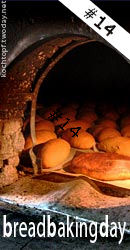
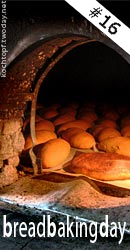
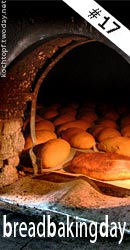






























































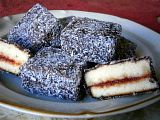






.jpg)











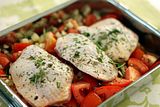

.jpg)





































